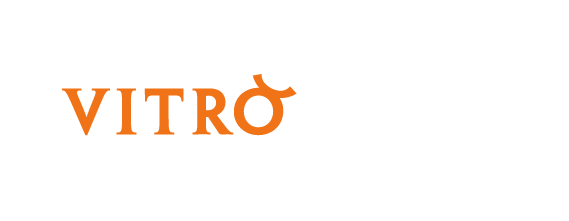Collections
Stained glass
The fascinating history of the development of stained glass is presented in a permanent exhibition of key works. The visitor follows a path leading past archaeological fragments from the 5th century AD, via masterpieces of the medieval, Renaissance, Historicist and Art Nouveau periods right up to modern and contemporary artworks in glass. Although the names of the artists who designed the oldest pieces of stained glass are generally not known, later works often can be attributed to well-known workshops or artists: among them, to name but a few, are the workshops of Dirk Vellert (16th century), Gustav van Treeck (19th century), and Louis Comfort Tiffany, and the artists Alexandre Cingria, Léon Zack, Alfred Manessier, Yoki, Augusto Giacometti, Brian Clarke, and Linda McCartney.
Among the jewels of the museum’s collection, the visitor can admire stained glass from Chartres Cathedral, as well as a work by Marc Chagall – one of the rare panels by him not to be installed in a building. This glass is also the subject of a documentary film, a touching testimony to the collaboration between this famous artist and his master glaziers.
The stained glass collection is one of the Vitromusée’s principal focuses, and it offers a wide panorama of the art form, covering everything from standalone artworks to stained glass windows from architectural contexts, both sacred and secular, the majority of them Swiss. In addition, there are several thousand fragments of ancient windows and glazing schemes, as well as collections of works of art in glass.
As witness for a technique or an artistic period, the objects from this collection are also continually studied through the collaborators from the Vitromusée or from his partner institution, the Vitrocentre Romont. The research, which is done on a part of these objects are published on the online platform vitrosearch.
Curator: Jennifer Burkard
Publication: Bergmann, U., Hasler, R., Jolidon, Y., Kaiser, A., Kurmann-Schwarz, B. et Trümpler, S. (2006). Stained glass: an introduction based on examples from the Vitromusée Romont and the surrounding region. Romont, Switzerland: Vitromusée Romont.
Reverse glass painting
At the present time, there is no museum in Switzerland or anywhere else, nor any private collection that houses such an important collection, of reverse paintings on glass, in terms of quality, variety and quantity, as the Vitromusée in Romont. The collection of Ruth and Frieder Ryser, which was bequeathed to the Vitrocentre for research purposes, constitutes the majority of the reverse glass paintings on display.
The Fribourg wing of Romont Castle is home to a permanent exhibition of the art of reverse painting, presenting an introduction to all facets of it in a display of 300 selected objects ranging in date from the Middle Ages to the twenty-first century. In the first space to which they come, a splendid Baroque great hall, visitors will marvel at the glimmering and shimmering plays of light that characterise these paintings, which reach far back into Antiquity, and which over the centuries have been produced by many famous artists.
The second room takes the visitor on an artistic voyage through the various countries in which reverse paintings on glass have been produced, from Europe to India and China. One section here provides an overview of the various techniques employed in reverse painting and the materials used. Examples of works by contemporary artists are displayed in the area that connects the second room to the former Salle des Baillis (the salon of the baillis, the governors of Fribourg). This third room has been restored to reveal its original 16th-century décor, and affords the visitor a glimpse of the refinement of Mannerist art in two armorials in glass that were created for display in a private space and decorated with reverse painting. Here the visitor will find an exclusive selection of artworks in glass from the municipality of Saint-Prex, as well as a display of blown, moulded and pressed glass produced between 1840 and 1910.
In the last room, the visitor will be able to appreciate the different forms adopted and the different functions fulfilled by the art of reverse painting on glass. This is an art form that throughout its long history has fascinated not only the highest church and state authorities and the richest art collectors of the Italian and German Renaissance, but also the middle classes in Southern Germany and Switzerland during the Rococo period, as well as simple farming folk during the 19th century.
Since the end of 2017 several examples of Reverse painting on glass are published online on the database vitrosearch. It is regularly updated and expanded. More than 70 works by the artist Jochem Poensgen, including 59 paintings under glass, have been available online since February 2019.
Curator: Elisa Ambrosio
Publication: Jolidon, Y. and Ryser, F. (2006). Reverse painting on glass: an introduction based on examples from Vitromusée Romont. Romont, Switzerland: Vitromusée Romont
Glass
Since November 2020 the permanent exhibition, which in addition to a large collection of glass paintings also includes a rich collection of reverse glass paintings, has been supplemented by a new section on glass.
Glass is omnipresent in our daily lives, and has been so for millenia. Decorative and functional objects in glass became part of the Vitromusée’s collections for the first time in 2006, when the museum received a legacy from Ruth and Frieder Ryser; further donations were made in 2015 and 2016 by Joseph Arnoth. The Vitromusée also owns a selection of artworks in glass from the Saint-Prex glassworks, to which has been added recently an important collection of blown, moulded and pressed glass.
This aspect of the glass arts now occupies an important place in the museum’s display. The exhibition concept was developed in collaboration with Erwin Baumgartner and Anne de Pury-Gysel, who have been closely associated with the Vitromusée Romont for many years. Nine thematic sections present the history of glass from antiquity to the 20th century, as well as the important pressed glass production in the 19th century and the products of the Verrerie artistique of Saint-Prex created between 1928 and 1964. A virtual photo gallery, created in collaboration with the Centro Studi del Vetro of the Fondazione Giorgio Cini, allows you to discover the internationally acclaimed glasses of the Venetian Seguso Vetri d’Arte studio through historical photographs. Finally, several films produced at the Corning Museum of Glass offer a glimpse into the millennia-old technique of glass blowing.
Curator: Elisa Ambrosio
Publication: Inauguration de la nouvelle section
Contemporary glass
Contemporary glass art takes us into a very different world, a world of completely new artistic approaches that are at once varied and captivating. The Vitromusée is committed to encouraging the glass arts, and together with various artists’ associations regularly organises exhibitions to bring a wide range of contemporary creations to public attention. The Vitromusée’s collection is constantly being expanded with recent works, which are displayed on a rotating basis.
While the classic techniques of stained glass and reverse painting on glass are still the media of choice for many modern artists, allowing them to create to this day works of art that are resolutely modern, artists are more and more exploring techniques such as fusing, thermoforming, casting, acid etching, bonding, sand blasting, and printing on glass. A great variety of objects come to life in the glass artist’s lair: pictures, sculptures, vases, installations and jewellery.
Graphic works
Graphic works relating to the glass arts constitute the most substantial part of the collections housed at the Vitromusée. They consist mainly of preliminary works from the holdings of studios and artists. There are sketches notable for their freshness, carefully worked up miniature models, and designs and cartoons abounding in detail that bear witness to the artist’s labour prior to the execution of a window by a glass-painter. Key items are displayed on a rotating basis.
Among the holdings from studios mention should be made of those of the glass-painters Hans Meyer and Hans Drenckhahn, and from the Fribourg studio of Kirsch & Fleckner. The latter collection is testament to the work of such artists as Friedrich Berbig, Henri Broillet, Raymond Buchs, Ernest Bieler, Jozef Mehoffer, Yoki, and Gaston Thévoz. The holdings relating to an individual artist often document a little-known aspect of an artist who worked in many media, such as (in Switzerland) Felix Hoffmann, Alexandre Cingria, Jean-Edward de Castella, Marcel Poncet, Edmond Bille, Charles Clément, Théodore Strawinsky, Bodjol, and Max Hunziker.
Vitromusée Romont houses the following collection:
- Karl Ludwig Herion (1858–1934)
- Edmond Bille (1878–1959)
- Bodjol (1919–2006)
- Max Brunner (1910–2007)
- Charles Clément (1889–1972)
- Hans Drenckhahn (1878–1953)
- Charles-François Philippe (1919–2003)
- Marcel Poncet (1894–1953)
- Felix Hoffmann (1911–1975)
- Max Hunziker (1901–1976)
- Fonds graphique Richard Indergand (divers artistes)
- Walter Kohler (?-1945)
- Hans Meyer (?-1961)
- Richard A. Nüscheler (1877–1950)
- Edy Renggli (1922–2017)
- Emil Reich (1922–1983)
- Robert Schär (1894–1973)
- Ernst Scheidegger (1937–2014)
- Théodore Strawinsky (1907–1989)
- Heinrich Stäubli (1926–2016)
- Peter Travaglini (1927–2015)
- Alfred Werck (1876–1960)
- Atelier Kirsch & Fleckner
Tools and materials
The Vitromusée Romont houses around 500 tools and specimens relating to the glass arts, a collection that is unparalleled at a national or even an international level. In the museum’s studio, visitors will be able to discover diamond cutters, lead mills, kilns, heating vessels, vitreous paints, brushes, moulds for lead calms, and many other tools. All of these are rare and precious testimonies to the technologies and bodies of knowledge that are gradually being lost.
Thematic sections
Création féminine
The Vitromusée Romont puts its collections in a new light and focuses on the artistic work of women. Since March 2020, the Création féminine is presented to the public in the section dedicated to reverse glass painting. The museum pursues the goal to make the works of female artists visible.
In order to underline the importance of female creativity in glass art, a dozen works by female artists (from the 18th to the 21st centuries) who have devoted themselves to this technique will be on permanent display.
The glassmaking tradition of Romont and its region
Since June 2020, the Vitromusée Romont has been presenting a selection of stained glass windows that retrace the long glassmaking tradition of Romont and the surrounding region, highlighting their importance for the arts and the glass industry, in particular for the renewal of Catholic sacred art between the two world wars and the establishment of a glass industry in Romont.
In the first room of the Vitromusée Romont, three geometric compositions from the first half of the 14th century, from the Collegiate Church of Romont, reflect the refinement of the art of medieval ornamental stained glass. The intense activity of the Saint-Luc Group, founded in 1919, is represented by Christ au Sacré-Cœur (1937), an emblematic work by the Geneva artist Alexandre Cingria (1879-1945), the main driving force behind the Saint-Luc Group, alongside the Fribourg architect Fernand Dumas (1892-1956), whose office was in Romont. Dumas, who was honoured in the commemorative stained glass window created by Cingria in 1942 to mark his 50th birthday, was responsible for the construction and renovation of more than sixty churches and chapels in French-speaking Switzerland. His projects were conceived in the spirit of total works of art, combining architecture and the decorative arts with the collaboration of artists mastering a variety of techniques: painting, sculpture, stained glass, mosaics, goldsmiths, tapestry, etc. The glass arts played a major role in these ensembles, with stained glass and glass tiles, as well as painting under glass.
This movement of artists, architects, intellectuals, public and ecclesiastical figures continued in the second half of the 20th century with the creations of master glassmakers and artists such as Michel Eltschinger (*1939), Yoki (1922-2012), Alfred Manessier (1911-1993) and Sergio de Castro (1922-2012), all of whom demonstrate an artistic dynamic strongly influenced by abstract art, as illustrated by the work Untitled (2001) by Yoki from Romont, which subtly combines colours with delicate nuances and soft curves.





